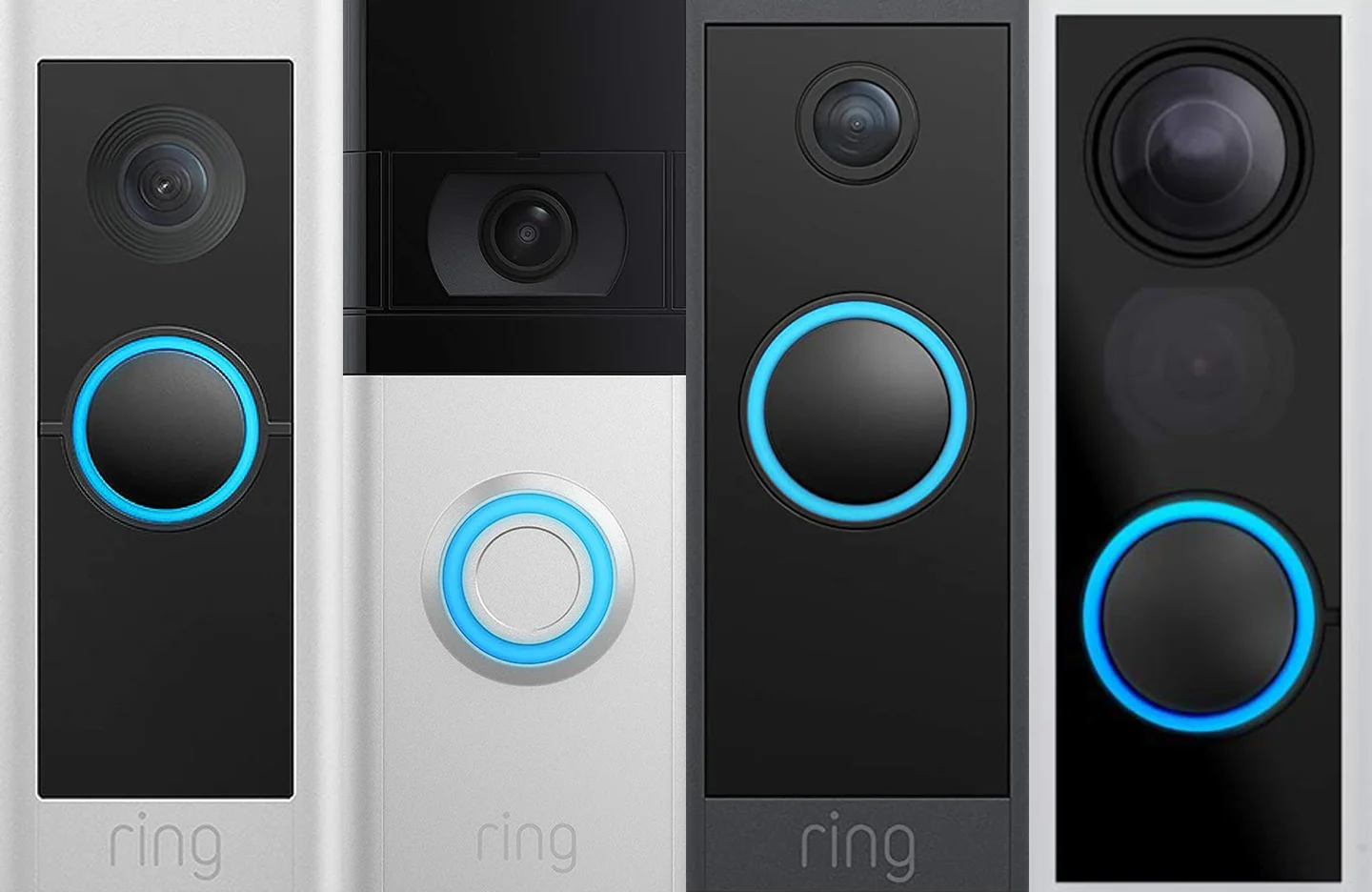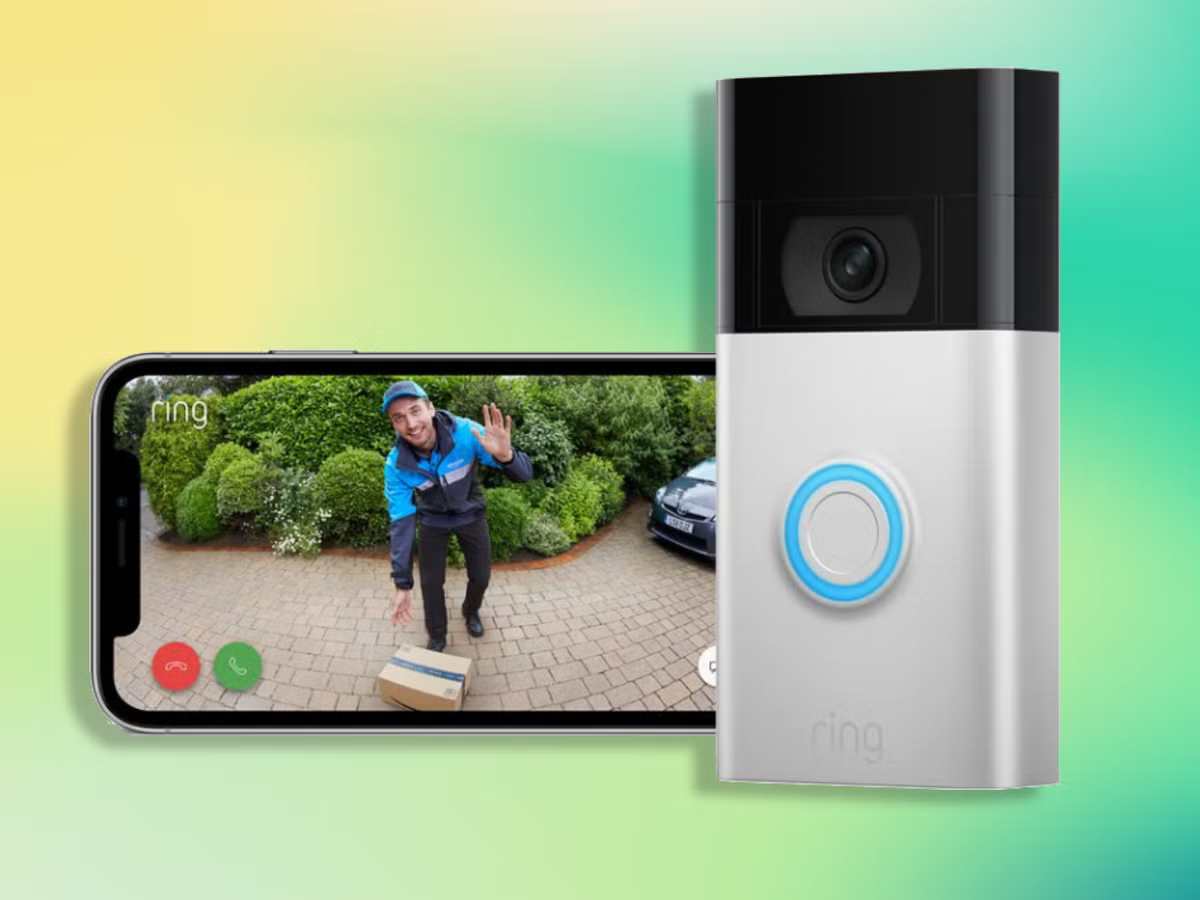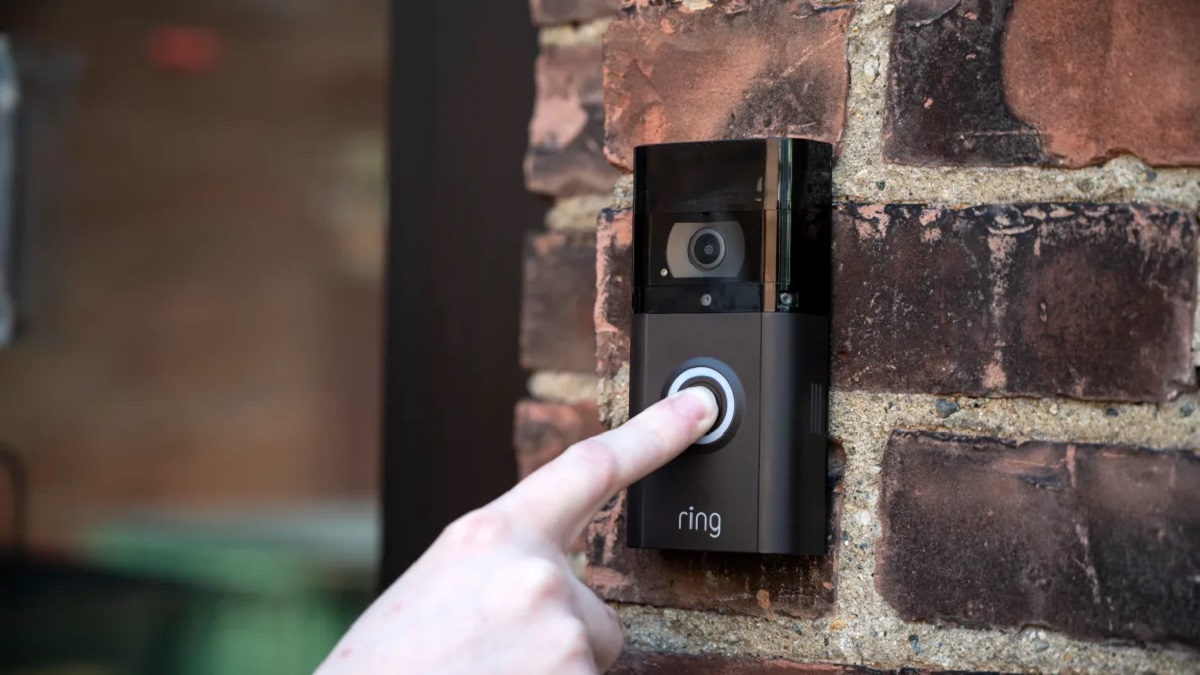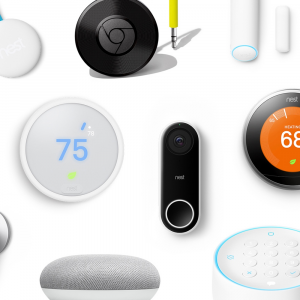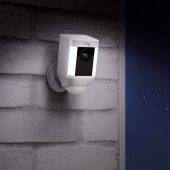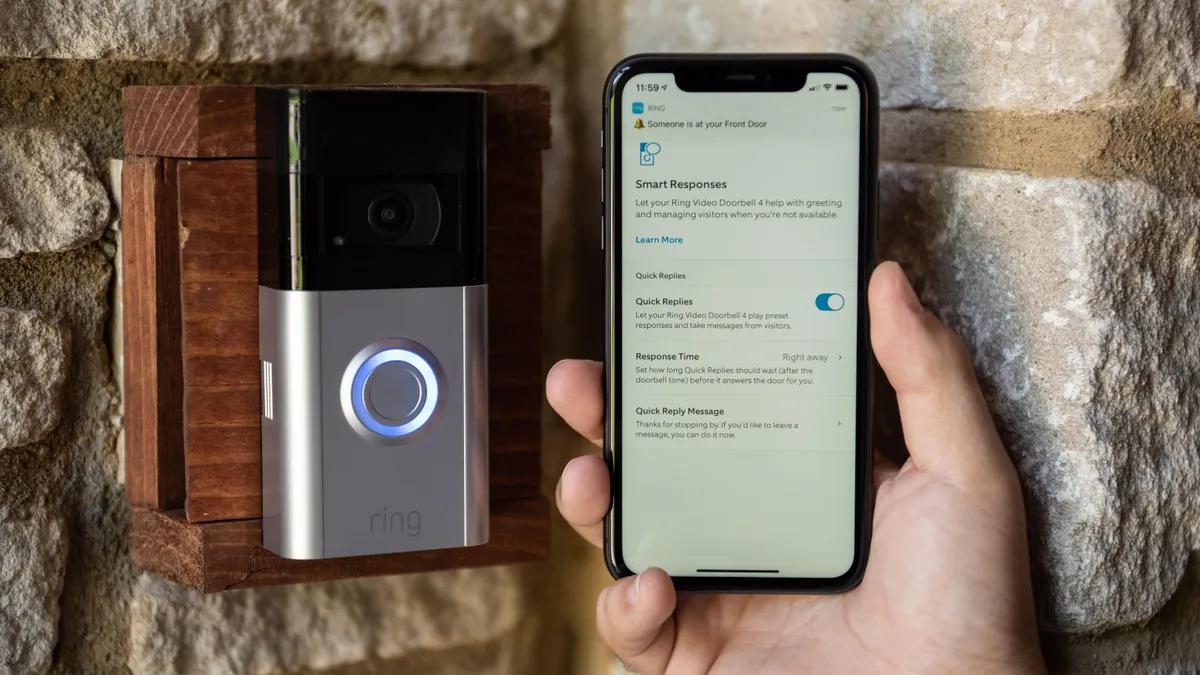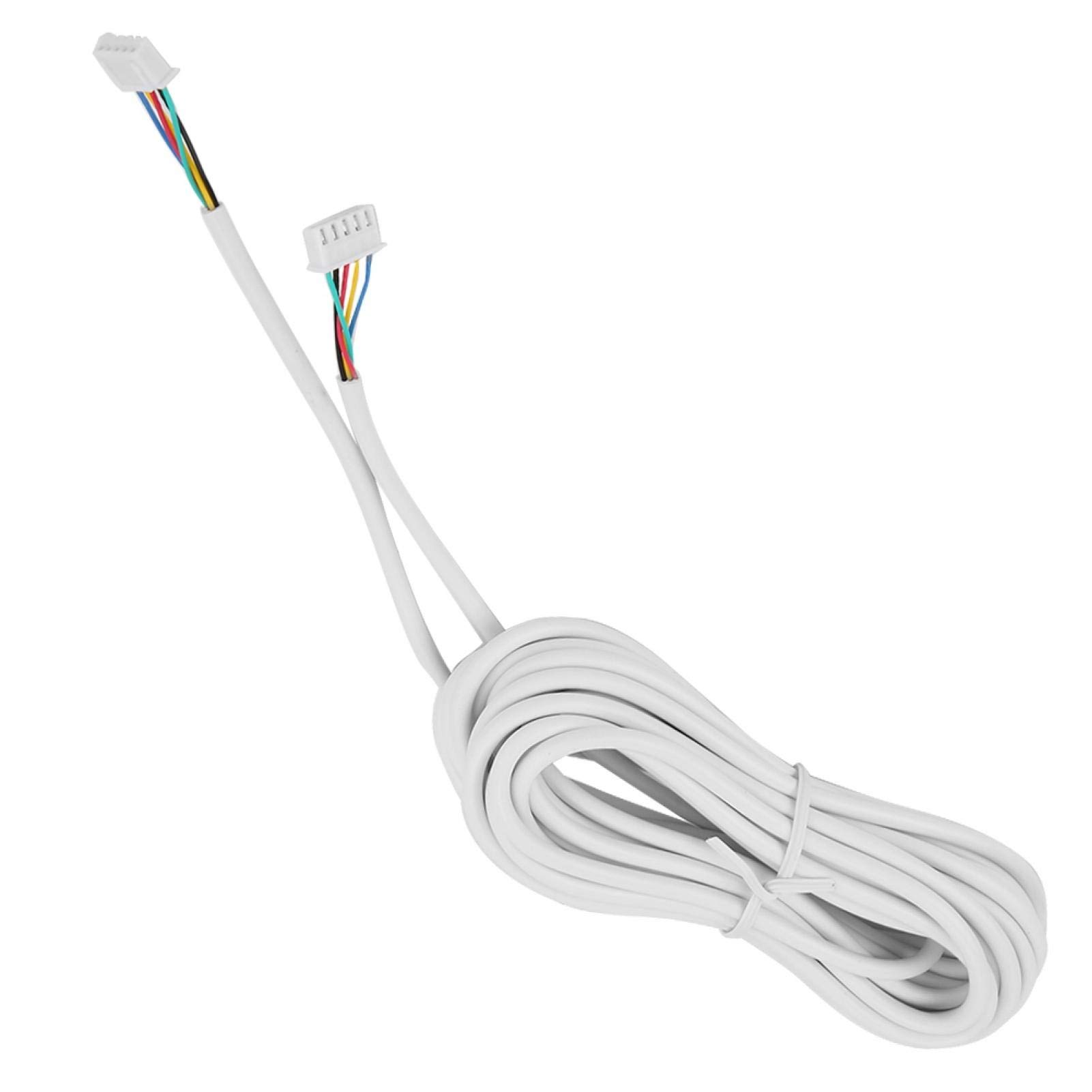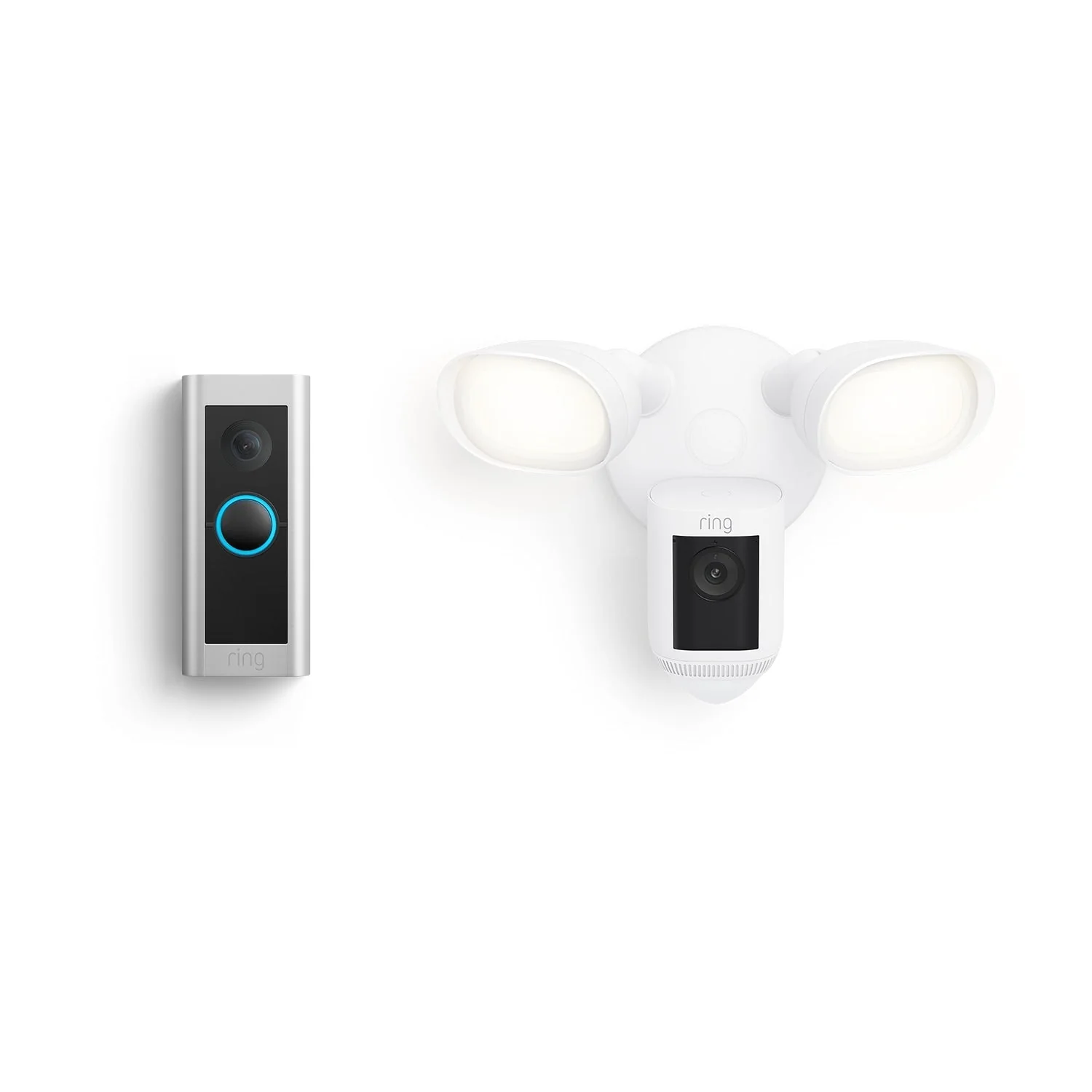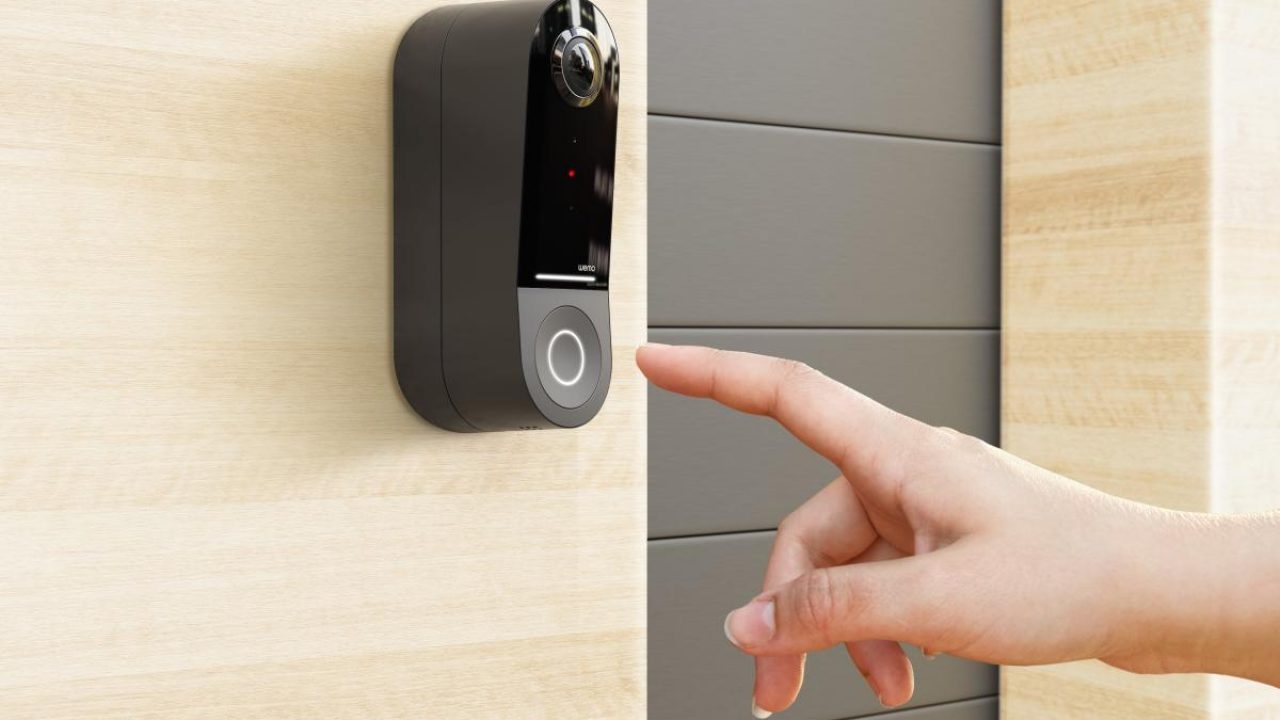Introduction
Welcome to our comprehensive guide on choosing the best video doorbell for your home security needs. With the rise in smart home technology, video doorbells have become an increasingly popular choice among homeowners looking to enhance their security systems. These innovative devices not only provide you with the ability to see who is at your doorstep in real-time, but also offer advanced features such as two-way audio communication, motion detection, and cloud storage of video footage.
When it comes to selecting a video doorbell, it can be overwhelming with the wide range of options available on the market. That’s why we have created this resource to help you make an informed decision based on your specific requirements and preferences. Whether you’re a tech-savvy homeowner or someone looking to dip their toes into the world of smart home devices, we’ve got you covered.
In the following sections, we will discuss the key factors to consider when choosing a video doorbell, the top features to look for, and then delve into some of the best video doorbell options currently available. Additionally, we will provide a comparison of popular video doorbell brands, weigh the pros and cons of wired and wireless models, offer a step-by-step guide on how to install a video doorbell, and address common troubleshooting issues you may encounter.
By the end of this article, you’ll have a comprehensive understanding of video doorbells and be able to make an educated choice that best suits your needs. So, let’s dive in and explore the wonderful world of video doorbell technology!
Factors to Consider When Choosing a Video Doorbell
When selecting a video doorbell for your home, it’s important to consider a variety of factors to ensure you make the right choice. Here are the key factors to keep in mind:
- Compatibility: Before making a purchase, check whether the video doorbell is compatible with your existing doorbell system or if it requires additional wiring or hardware adjustments.
- Power Source: Video doorbells can be powered by batteries, hardwiring, or a combination of both. Consider your preferences and the availability of power sources near your front door when making a decision.
- Video Quality: Look for a video doorbell that offers high-definition video resolution and a wide viewing angle to capture clear footage of your doorstep and surrounding area.
- Two-Way Audio: The ability to communicate with visitors through a built-in microphone and speaker is a valuable feature. Ensure that the video doorbell you choose offers reliable and clear two-way audio functionality.
- Motion Detection: A video doorbell with motion sensors can alert you when someone approaches your front door, even if they don’t ring the doorbell. Look for adjustable motion detection settings and the ability to customize activity zones.
- Smart Home Integration: Consider whether you want your video doorbell to be compatible with other smart home devices or voice assistants like Amazon Alexa or Google Assistant for added convenience and seamless integration.
- Cloud Storage and Subscription Plans: Check if the video doorbell offers cloud storage of recorded footage and what the subscription plans entail. Some video doorbell brands offer limited free storage, while others require a monthly or yearly subscription for extended storage and additional features.
- Security and Privacy: Pay attention to the security features of the video doorbell, such as encryption, secure app access, and the manufacturer’s commitment to protecting your privacy and data.
By considering these factors, you can narrow down your options and choose a video doorbell that meets your specific requirements and provides the level of security and convenience you desire. Now that we’ve discussed the key factors to consider, let’s explore the top features to look for in a video doorbell.
Top Features to Look for in a Video Doorbell
When shopping for a video doorbell, it’s essential to consider the features that will enhance your home security and provide a seamless user experience. Here are some of the top features to look for:
- High-Definition Video: Opt for a video doorbell that offers high-resolution video quality, ideally 1080p or higher, to ensure clear and detailed footage of whoever is at your doorstep.
- Wide Viewing Angle: Look for a video doorbell with a wide field of view to capture a broader perspective of your front porch, allowing you to see more of what’s happening outside.
- Two-Way Audio: A crucial feature, two-way audio allows you to communicate with visitors through the video doorbell’s built-in microphone and speaker. This feature is ideal for interacting with delivery personnel or deterring potential intruders.
- Motion Detection: Select a video doorbell with reliable motion detection sensors that can detect activities in the designated areas and send you instant notifications. Customizable motion zones and sensitivity settings are also valuable for reducing false alerts.
- Night Vision: Ensure that the video doorbell provides clear and detailed footage even in low-light or nighttime conditions. Look for infrared or color night vision capabilities, which can greatly enhance the visibility during nighttime hours.
- Smart Connectivity: Consider a video doorbell that integrates seamlessly with your existing smart home devices and platforms. Compatibility with popular voice assistants like Amazon Alexa or Google Assistant can provide a more convenient and connected home experience.
- Cloud Storage: Look for video doorbells that offer secure cloud storage for saving recorded videos. Check the storage options available, such as free storage limits and subscription plans for extended storage and additional features.
- Weather Resistance: Check the video doorbell’s IP rating to ensure it can withstand outdoor elements such as rain, snow, or extreme temperatures. A weather-resistant video doorbell will ensure consistent performance and longevity.
- User-Friendly Mobile App: The quality and usability of the accompanying mobile app are crucial for a seamless user experience. Look for video doorbell brands that offer intuitive and feature-rich mobile apps for easy access to live video feeds, notifications, and settings.
- Installation and Wiring: Consider the installation process and determine whether you prefer a wired or wireless video doorbell. Wired doorbells require professional installation and wiring, while wireless models offer easier DIY installation.
By prioritizing these essential features when choosing a video doorbell, you can find a device that aligns with your security needs and seamlessly integrates into your smart home ecosystem. Now let’s move on to exploring some of the best video doorbells available for home security.
Best Video Doorbells for Home Security
When it comes to video doorbells, there are several top-rated options that offer excellent home security features and functionality. Here are some of the best video doorbells currently available:
- Ring Video Doorbell: Known for its wide range of features and reliability, the Ring Video Doorbell offers HD video, two-way audio, motion detection, and customizable motion zones. It also integrates seamlessly with other Ring devices and has optional cloud storage plans.
- Nest Hello: From the Google Nest family, the Nest Hello boasts impressive video quality, facial recognition, and pre-recorded messages for quick responses. It also offers continuous video recording with a Nest Aware subscription.
- Arlo Video Doorbell: The Arlo Video Doorbell features a unique vertical field of view, allowing you to see packages on the ground. It offers HD video, two-way audio, motion detection, and compatibility with Alexa and Google Assistant.
- Eufy Security Video Doorbell: The Eufy Security Video Doorbell offers great value for its price. It provides 2K video resolution, two-way audio, customizable motion detection zones, and local storage without any subscription fees.
- SkyBell HD: The SkyBell HD impresses with its 1080p video quality and color night vision capabilities. It offers two-way audio, motion detection, and free cloud storage for recorded videos.
These video doorbells have gained popularity due to their reliability, advanced features, and positive customer reviews. However, it’s essential to choose the video doorbell that best fits your specific needs and preferences. Consider factors such as video quality, audio clarity, smart home integration, and budget when making your decision.
Next, let’s compare some of the popular video doorbell brands and what sets them apart from each other.
Comparison of Popular Video Doorbell Brands
When it comes to video doorbells, there are several reputable brands that offer a range of options to suit different needs. Let’s compare some of the popular video doorbell brands and highlight what sets them apart:
- Ring: Ring is a well-known brand that offers a variety of video doorbell models. Known for its easy setup and user-friendly app, Ring provides features such as HD video, two-way audio, customizable motion zones, and integration with other Ring devices. It also offers optional cloud storage plans for video footage.
- Nest: Nest, owned by Google, offers the Nest Hello video doorbell. This brand focuses on advanced features like facial recognition, continuous video recording with a subscription, and seamless integration with other Nest devices. The Nest app provides a user-friendly interface and smart notifications.
- Arlo: Arlo is known for its wire-free and battery-powered video doorbells. Its video doorbells offer features such as HD video quality, two-way audio, motion detection, and compatibility with voice assistants. Arlo also provides cloud storage options for recorded videos and offers a wide range of other security cameras.
- Eufy: Eufy offers a range of affordable and feature-rich video doorbells. Their devices provide high-resolution video, two-way audio, customizable motion detection, and local storage capabilities without any subscription fees. Eufy video doorbells are known for their reliability and value for money.
- SkyBell: SkyBell focuses on delivering high-quality video doorbells with features like HD video, two-way audio, motion detection, and free cloud storage. They also offer color night vision capabilities, ensuring clear footage even in low-light conditions. SkyBell devices are known for their sleek design and ease of installation.
Each brand has its unique strengths and features that cater to different user preferences. Consider factors such as video quality, audio clarity, smart home integration, cloud storage options, and pricing when comparing video doorbell brands.
Next, let’s explore the advantages and disadvantages of wired and wireless video doorbells to help you make an informed decision.
Pros and Cons of Wired and Wireless Video Doorbells
When choosing a video doorbell, one important consideration is whether to opt for a wired or wireless model. Each option has its own advantages and disadvantages. Let’s explore the pros and cons of wired and wireless video doorbells.
Wired Video Doorbells:
- Reliability: Wired video doorbells are typically more reliable since they don’t rely on batteries. They are powered directly from your home’s electrical system, ensuring consistent performance.
- Continuous Power: With a wired connection, you don’t have to worry about running out of battery power or recharging the doorbell frequently.
- Higher Video Quality: Wired video doorbells often offer higher video resolution and image quality due to their continuous power source.
- Integration with Existing Doorbell: If you already have a traditional wired doorbell, a wired video doorbell can usually be connected to the existing wiring, making installation easier.
- Professional Installation: Wired video doorbells usually require professional installation to ensure proper wiring and connection to your home’s electrical system.
- Limited Installation Locations: The wiring constraints of a wired video doorbell can limit the locations where it can be installed, as it needs to be connected to an existing doorbell wiring.
Wireless Video Doorbells:
- Easy Installation: Wireless video doorbells are generally easier to install as they don’t require any complicated wiring. They can be easily mounted on your door or wall using adhesive or screws.
- Flexibility in Installation Location: Wireless doorbells offer more flexibility in terms of installation locations since they are not tied to wiring. This allows homeowners to choose the best spot for optimal coverage.
- Battery-Powered: Wireless doorbells are powered by batteries, making them portable and easy to maintain. However, you’ll need to recharge or replace the batteries periodically.
- Lower Video Quality: Wireless video doorbells may have slightly lower video quality compared to wired models, as their power source is limited to battery capacity.
- Potential Signal Interference: Depending on your home’s construction and wireless network strength, you may experience signal interference, leading to occasional connectivity issues.
- Battery Management: Managing the battery life of a wireless video doorbell is crucial to ensure uninterrupted operation. Regular recharging or battery replacement is required.
Considering these pros and cons will help you determine whether a wired or wireless video doorbell is the right choice for your home. Next, let’s delve into the installation process for video doorbells.
How to Install a Video Doorbell
Installing a video doorbell can vary depending on the specific model and your home’s setup. However, here’s a general guide to help you with the installation process:
- Prepare the Tools: Gather the necessary tools, such as a screwdriver, drill, level, and possibly a wire stripper, depending on the type of video doorbell you’re installing.
- Turn Off Power: If you’re installing a wired video doorbell, turn off the power at the main electrical panel before beginning any work.
- Remove the Old Doorbell (if applicable): If you’re replacing an existing doorbell, remove it carefully, disconnecting the wires from the old unit.
- Mount the Bracket: Follow the manufacturer’s instructions to mount the bracket or baseplate provided with your video doorbell. Ensure it’s level and securely attached to the wall or door frame.
- Connect the Wiring: For wired video doorbells, connect the provided wires to the corresponding terminals on the video doorbell unit. Follow the wiring diagram or instructions carefully to ensure proper connection.
- Attach the Doorbell Unit: Once the bracket and wiring are in place, securely attach the video doorbell unit to the bracket or baseplate. Ensure it is level and oriented correctly.
- Test the Installation: Turn on the power (if applicable) and test the video doorbell to ensure it powers up and connects to your home’s Wi-Fi network. Follow the manufacturer’s instructions to complete the setup process.
- Adjust the Settings: Access the mobile app or web portal provided by the video doorbell manufacturer to customize the settings according to your preferences. This may include adjusting motion detection zones, notification settings, and enabling any additional features.
- Monitor and Maintain: Regularly check the video doorbell to ensure it is functioning properly. Keep an eye on battery levels (if applicable) and clean the lens periodically to maintain clear video quality.
It’s worth noting that certain video doorbell models may have specific installation requirements or additional steps. Always refer to the manufacturer’s installation guide and follow their instructions for the best results.
Now that your video doorbell is installed and ready to go, let’s address some common troubleshooting issues you may encounter.
Troubleshooting Common Issues with Video Doorbells
While video doorbells are designed to provide seamless functionality, there can be instances when you may encounter some common issues. Here are some troubleshooting tips for resolving these problems:
- Connection Issues: If your video doorbell is not connecting to your Wi-Fi network or experiencing intermittent connectivity, ensure that your Wi-Fi signal is strong in the installation area. Try rebooting your router or moving your router closer to the doorbell to improve the signal.
- Power Problems: For wired video doorbells, check if the wires are properly connected. If the unit is battery-powered, ensure that the batteries are charged or replace them if necessary. Always use high-quality and compatible batteries.
- Insufficient Video Quality: If the video quality appears blurry or distorted, clean the camera lens with a soft, lint-free cloth. Adjust the camera angle and positioning to achieve a better view of your doorstep.
- Motion Detection Errors: Adjust the sensitivity settings of the motion detection feature to avoid false alerts triggered by passing cars, animals, or other non-relevant movements. Create specific motion zones to focus on areas that are most important to monitor.
- Audio Issues: If you’re experiencing problems with audio during two-way communication, check if the microphone and speaker openings are clear of any debris or obstructions. Make sure the volume settings in the app are properly adjusted.
- App Malfunctions: If the video doorbell’s accompanying mobile app is not working correctly, try closing the app and reopening it. Ensure that you have installed the latest app version and that your smartphone’s operating system is up to date.
- Cloud Storage Problems: If you’re encountering issues with cloud storage or video playback, verify that your video doorbell is properly connected to the internet and that your cloud storage subscription, if applicable, is active and not full.
- Inadequate Night Vision: If the night vision feature is not providing clear footage in low-light conditions, ensure that there are no obstructions such as spider webs or dirt on the camera lens. Check the device settings to ensure that night vision is enabled.
- Resetting the Doorbell: If all else fails, you may need to reset your video doorbell to its factory settings. Consult the manufacturer’s instructions on how to perform a reset and follow the steps carefully.
If you continue to experience issues with your video doorbell despite troubleshooting, it is recommended to contact the manufacturer’s customer support for further assistance. They can provide specific guidance and troubleshoot problems that are unique to your device model.
With these troubleshooting tips, you can address common issues and ensure that your video doorbell provides reliable security and convenience for your home. In our final section, we will provide some closing thoughts and recommendations.
Final Thoughts and Recommendations
Video doorbells have revolutionized home security by providing an extra layer of protection and convenience. As you consider the various options available, here are some final thoughts and recommendations to help you make the best choice:
Assess Your Needs: Take the time to evaluate your specific requirements in terms of features, budget, and installation preferences. Determine what matters most to you, whether it’s video quality, two-way audio, smart home integration, or cloud storage options.
Read Reviews and Compare: Utilize online resources and read reviews from verified buyers to gain insights into the performance, reliability, and customer satisfaction of different video doorbell models. Comparing features and specifications will also help you narrow down your options.
Consider Long-Term Costs: Take into account any additional costs associated with video doorbells, such as subscription plans for cloud storage or extended features. Balance the upfront cost of the device with the ongoing expenses to ensure it’s within your budget.
Prioritize Security and Privacy: Look for video doorbell manufacturers that prioritize the security and privacy of your data. Ensure they use encryption protocols, secure app access, and have transparent privacy policies.
Installation and Compatibility: Consider whether you prefer a wired or wireless video doorbell based on your home’s setup and your installation capabilities. Check compatibility with your existing doorbell wiring or smart home devices, and consider professional installation if needed.
Research Customer Support: Investigate the manufacturer’s customer support availability and reputation. Good customer support can be crucial when dealing with any technical issues or inquiries, ensuring a smooth experience throughout your ownership.
Regular Maintenance: Once you’ve installed your video doorbell, perform regular maintenance such as cleaning the lens, checking for firmware updates, and monitoring battery levels if applicable. This will help ensure optimal performance and longevity of your device.
Ultimately, the best video doorbell for you will depend on your unique requirements and preferences. Whether you choose a well-known brand or an up-and-coming option, following these recommendations will help you find a video doorbell that enhances your home security and provides peace of mind.
With the right video doorbell in place, you can better monitor and protect your home, allowing you to answer the door from anywhere and keep a watchful eye on your property. So, take the time to research, compare, and select a video doorbell that suits your needs, and enjoy the enhanced security and convenience it brings to your home.







